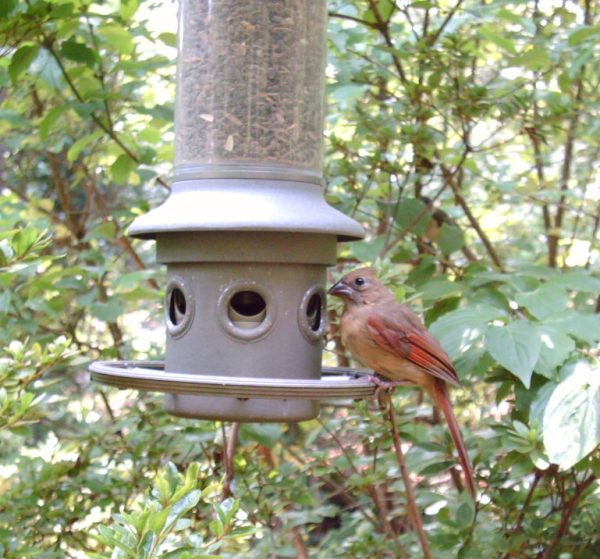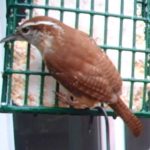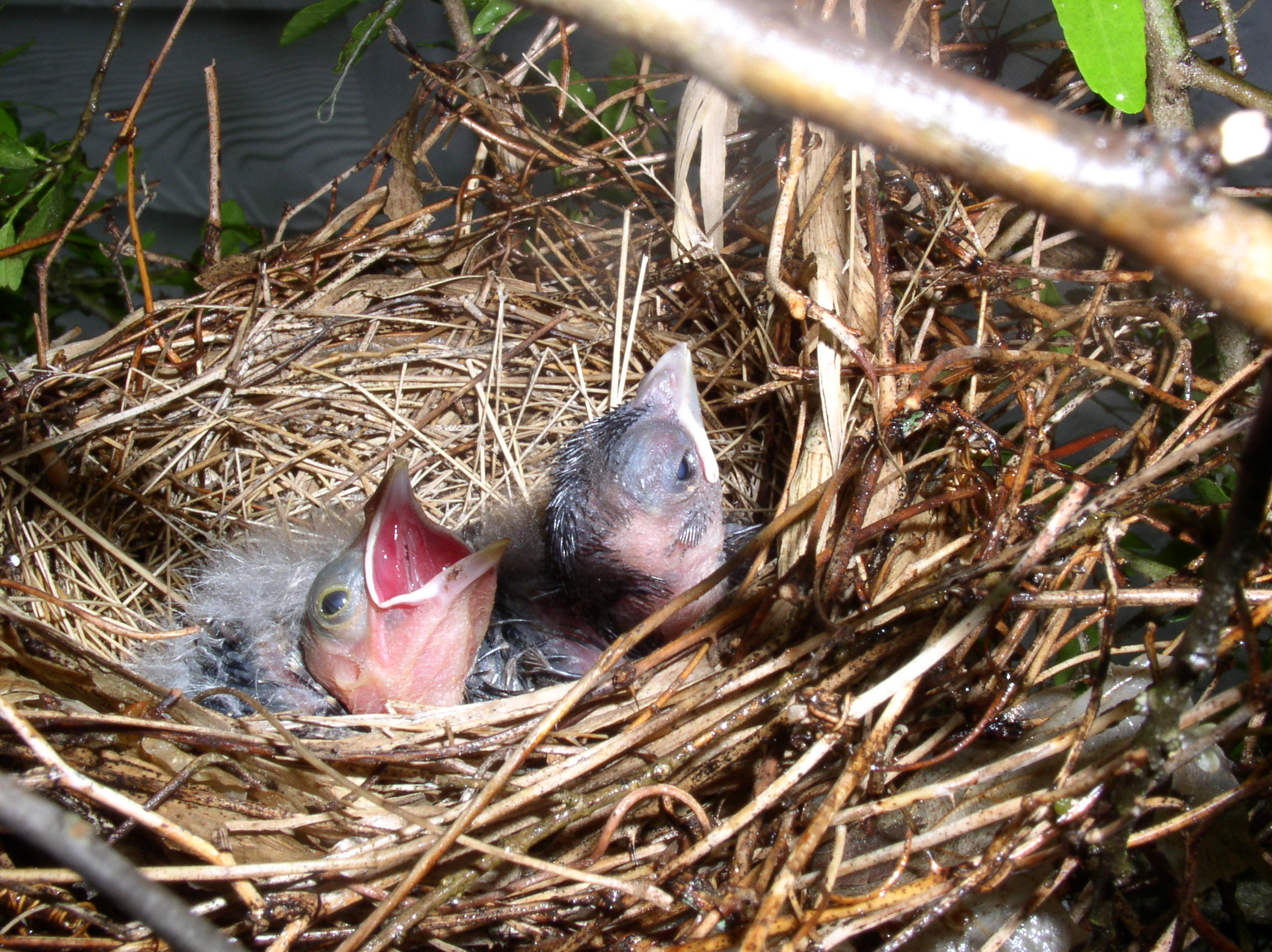Birds – Attracting

To attract birds at any time of the year, select plants that provide nectar, fruits, berries or nuts. There are many trees and shrubs that offer fruit or berries long into fall and even through winter. The small apples of ‘Zumi’ crabapple are a favorite of purple finches and many other birds, while the purple berries of beautyberry are a winter treat for several Georgia native birds. Hawthorne, privet (although it is invasive), dogwood, American holly and viburnum are a few of the many plants that provide birds food from autumn into winter.
COVER AND NESTING AREAS Birds and small wildlife need protection from the elements and predators. If you can, avoid trimming lower branches on bushes. Plant tall grasses like miscanthus and pennisetum to provide ample hiding places. Be sure to include tall, mature trees in your wildlife refuge. If your trees are not yet large enough to support a bird family, nest boxes can be mounted on poles to attract sparrows, tree swallows and house wrens.
LOCAL BIRDING GROUPS If you enjoy watching birds or gathering with those who do, there are at least two local groups to contact. The Atlanta Audobon Society meets monthly. Southern Wings Bird Club meets monthly in Lawrenceville and hosts a variety of speakers on the hobby of birding. Both groups’ meetings are free and open to the public.
MORE WAYS TO BRING BIRDS TO YOUR LANDSCAPE
A week ago I described how to make peanut butter suet to attract woodpeckers to your landscape. I listed a few plants that attract birds in winter but I ran out of room before I could list them all. Other factors – water, shelter and nesting spots – also make your yard a bird haven. Finally, bird feeding could lure pests and I want you to be aware of that possibility as well.
So, here goes….round two of attracting birds to your landscape.
MORE BIRD-ATTRACTING PLANTS Last week I listed ‘Zumi’ crabapple, beautyberry, hawthorn, dogwood, American holly and viburnum as good plants for birds. Add to that list raspberry, serviceberry, blackberry, blueberry, grape and plum. Mulberry and sumac also attract birds but are better sited in the farthest corners of your landscape.
RECOMMENDED BIRD FOOD Suet attracts birds that cling to vertical surfaces: nuthatches, titmice, chickadees and woodpeckers. Thistle seed is a favorite of finches but requires a special tube with small holes to dispense the seed. Black oil sunflower seed brings titmice, cardinals, chickadees and wrens by the score. Proso millet is favored by several birds. Most bird feeding experts discourage using the inexpensive bird food mixes that contain wheat, sorghum, and hemp seed. These seed are not bird favorites and the birds will simply pick through what they don’t want while looking for the food they desire.
Black oil sunflower seed also assures that birds won’t scratch uneaten food to the ground beneath the feeder. There, squirrels, chipmunks, rats and mice can find the food and will establish a settlement nearby.
The Best Seeds for Backyard Birds
SQUIRREL PROOFING Squirrels are the bane of bird feeders. I went though a half-dozen plastic and wooden feeders before I bought an Eliminator from Wild Birds Unlimited. It has a weighted, adjustable perch which allows lightweight birds to feed but slams a door over the feeding portals when a squirrel gives it a try. Reviewers also give high marks to the RollerFeeder ™. I recently spent several enjoyable minutes in front of a store video player watching squirrels attempt to master a Yankee Flipper ™ bird feeder. A motorized perch spins around when a squirrel grasps it. Although pricey, this feeder is guaranteed to tempt you to produce a video of “Stupid Squirrel Gymnastics”.
INSECT PESTS Bird enthusiasts enjoy seeing flying creatures outside their home. Improperly stored birdseed, however, can bring flying creatures indoors. Indian meal moth is a common insect pest of birdseed. If you keep birdseed indoors you might soon notice small, slow-flying moths in your kitchen and discover larvae in your oatmeal. I recommend that you store birdseed in a metal container in your garage or outdoor shed. I use a medium-sized galvanized trash can which easily holds a twenty-five pound bag of sunflower seed and which has served me well for four years.
WATER, SHELTER I’ve concentrated only on bird food so far but according to bird experts, our feathered friends need three other basic things to keep them happy — water, cover and nesting areas.
Birds need a source of water for drinking and in summer they also enjoy a place to bathe. Whether you provide a small bird bath or an excavated pond, locate it in an area where it can easily be seen from the house or patio. The result will be hours of entertainment as the birds drop by for a drink and dip in the pool. To keep the water ice-free during the winter, consider installing a small heating element available from a garden center or through garden catalogs.
If your garden space allows, develop a pond with plants in and around it to attract other wildlife to your refuge. Rabbits, chipmunks, turtles and frogs may soon start moving into the neighborhood.
Evergreen shrubs furnish shelter for over-wintering birds. Wax myrtle, large hollies, cryptomeria, arborvitae and Leyland cypress are good choices. They also make good sites for summer nests. Building a nest box is a fun activity for you and the rest of your family.
The Baltimore Bird Club has an excellent Web site containing nest box plans plus reams of good information on attracting birds.
IDENTIFYING BIRDS The Sibley Guide to Birds is lavishly illustrated and shows seasonal and regional variations in bird plumage. The late Anselm Atkins, a Decatur resident, published “Common Birds of Atlanta” (Hexagon Publishing, $10). It is available at Eagle Eye Books

















